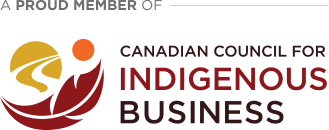Your cart is currently empty!

ISO 10839:2022
ISO 10839:2022 Polyethylene pipes and fittings for the supply of gaseous fuels – Code of practice for design, handling and installation
CDN $273.00
Description
This document presents a code of practice dealing with polyethylene (PE) pipes and fittings for buried pipeline systems outside buildings, conforming to the ISO 4437 series, and designed to transport gaseous fuels [as defined in ISO 4437-1, e.g. methane, liquified petroleum gas (LPG), manufactured gas and hydrogen] within the temperature range –20 °C to +40 °C. This document also gives appropriate temperature-related requirements.
The code of practice covers mains and service lines whose components are prepared for fusion or mechanical jointing. It also gives instructions for the design, storage, handling, transportation, laying conditions and fusion quality control of PE pipes and fittings as well as subsequent joint testing, backfilling, pipe system testing and commissioning.
NOTE      For the renovation code of practice, reference is made to the ISO 11299 series and to ISO 11295 for classification and to the ISO 21225 series for further information for trenchless replacement.
The minimal requirements for the jointing methods are given in:
-    Annex A (butt fusion);
-    Annex B (electrofusion); and
-    Annex C (mechanical jointing).
In some countries the use of heated-tools socket and saddle fusion is permitted; information on heated-tools fusion jointing techniques is given in Annex D.
In the case of ground movement or shaking (e.g. earthquakes, etc.) it can be necessary to implement precautions mentioned in this document following guidelines provided by authorities (e.g. Eurocode 8,[7] EN 12007-1:2012, Annex A,[8] etc.),
Workers’ health and safety issues are outside the scope of this document.
Edition
2
Published Date
2022-07-22
Status
PUBLISHED
Pages
33
Format 
Secure PDF
Secure – PDF details
- Save your file locally or view it via a web viewer
- Viewing permissions are restricted exclusively to the purchaser
- Device limits - 3
- Printing – Enabled only to print (1) copy
See more about our Environmental Commitment
Abstract
This document presents a code of practice dealing with polyethylene (PE) pipes and fittings for buried pipeline systems outside buildings, conforming to the ISO 4437 series, and designed to transport gaseous fuels [as defined in ISO 4437-1, e.g. methane, liquified petroleum gas (LPG), manufactured gas and hydrogen] within the temperature range –20 °C to +40 °C. This document also gives appropriate temperature-related requirements.
The code of practice covers mains and service lines whose components are prepared for fusion or mechanical jointing. It also gives instructions for the design, storage, handling, transportation, laying conditions and fusion quality control of PE pipes and fittings as well as subsequent joint testing, backfilling, pipe system testing and commissioning.
NOTE      For the renovation code of practice, reference is made to the ISO 11299 series and to ISO 11295 for classification and to the ISO 21225 series for further information for trenchless replacement.
The minimal requirements for the jointing methods are given in:
-    Annex A (butt fusion);
-    Annex B (electrofusion); and
-    Annex C (mechanical jointing).
In some countries the use of heated-tools socket and saddle fusion is permitted; information on heated-tools fusion jointing techniques is given in Annex D.
In the case of ground movement or shaking (e.g. earthquakes, etc.) it can be necessary to implement precautions mentioned in this document following guidelines provided by authorities (e.g. Eurocode 8,[7] EN 12007-1:2012, Annex A,[8] etc.),
Workers' health and safety issues are outside the scope of this document.
Previous Editions
Can’t find what you are looking for?
Please contact us at:
Related Documents
-

ISO 5078:2025 Management of terminology resources – Terminology extraction
0 out of 5CDN $233.00 Add to cart -

ISO 20537:2025 Footwear – Identification of defects during visual inspection – Vocabulary
0 out of 5CDN $273.00 Add to cart -

ISO 80004:2011 Nanotechnologies – Vocabulary – Part 7: Diagnostics and therapeutics for healthcare
0 out of 5CDN $115.00 Add to cart -

ISO 80004:2020 Nanotechnologies – Vocabulary – Part 8: Nanomanufacturing processes
0 out of 5CDN $76.00 Add to cart







